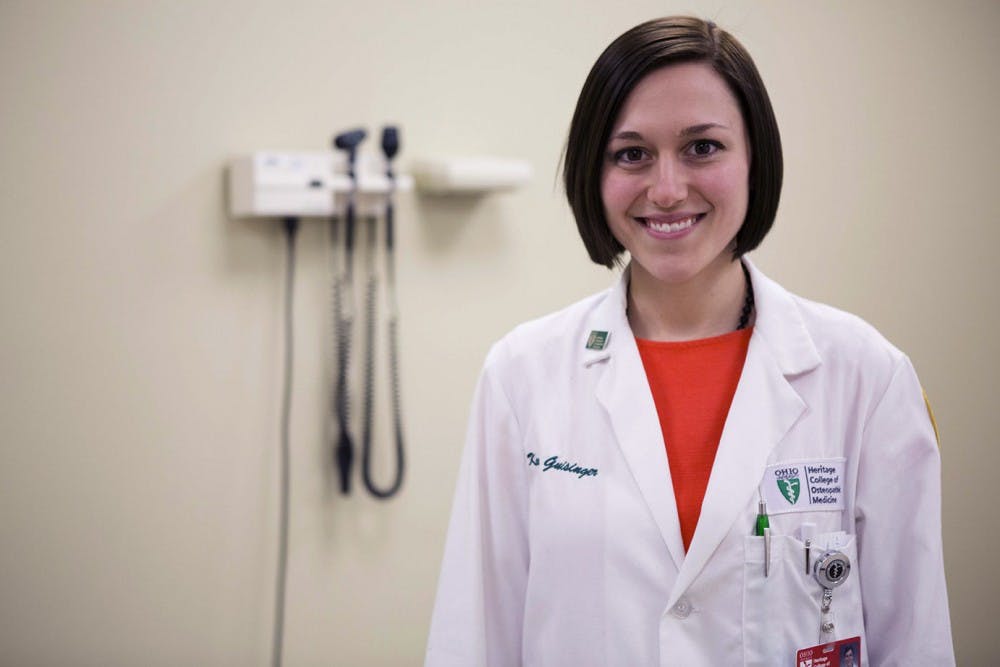Nearly 60 percent of OU-HCOM’s graduates currently practice in the state of Ohio.
While the demand for primary care physicians continues to rise, Ohio University is doing its part to produce professionals to work both in and out of the state.
By 2020, the United States could face a shortage of about 45,000 primary care physicians — doctors who treat the patient initially for a diagnosis and continue to see the patient — according to the Association of American Medical Colleges.
“Primary care doctors are healthcare’s first line of defense, but it’s pretty widely agreed that this country is facing a growing shortage of them,” said Kenneth Johnson, executive dean of OU’s Heritage College of Osteopathic Medicine.
Primary care physicians see patients to explain their conditions, provide care and coordinate any treatment from specialists, Johnson said.
“A primary care physician is your personal doctor, the one you go to first when you don’t feel right, but don’t know what’s wrong with you,” Johnson said. “He or she knows your medical history, knows you as a person and gives you regular checkups and advice on how to stay healthy.”
As a result of the projected shortage, one of the goals of OU-HCOM is to produce primary care physicians — especially those who plan to stay and practice in Ohio.
“We were chartered back in 1975 to really produce outstanding primary care physicians, and, in general, great physicians for the state of Ohio. So we took that charge very seriously,” said John Schriner, assistant dean of admissions for OU-HCOM. “We want to have a good, strong percentage of students from Ohio because there’s a strong propensity for them to stay in Ohio and practice in Ohio and meet the needs of our patients in state.”
Of the more than 2,300 currently practicing OU-HCOM graduates from 1980 to 2014, 48 percent are practicing primary care in the United States, according to January 2015 data from the college.
Within that data set, 58 percent are currently practicing medicine in Ohio.
Kara Guisinger, a second-year student in OU-HCOM, plans to become one of those physicians once she graduates.
“I think I’ve gotten lucky that what I’m interested in is what is needed right now,” Guisinger said. “It’s nice to know that it’s contributing to a definite need, and I think that it’ll be very fulfilling, both because of the personal contact and because it is needed.”
Guisinger said she was attracted to OU-HCOM because of its devotion to primary care.
“What I’m most attracted to is the long-term relationship with patients,” she said. “I’m really interested in preventative care and just the idea that you can have a relationship with a patient for 20 or 30 years potentially.”
Some politicians are concerned about graduates moving out of state instead of staying in Ohio, according to a previous Post article.
For the 2014-15 academic year, 91 percent of OU’s medical students came from Ohio, Johnson said.
Some of the most common undergraduate universities that students come from include the Ohio State University, Miami University, University of Cincinnati and OU, Schriner said.
One way that OU-HCOM hopes to produce more physicians for the state is through the new campuses in Dublin and Cleveland.
“The intent of those campuses is to really have people from that geographic area,” Schriner said.
For the Dublin campus’ inaugural class, 35 out of the 50 students enrolled are from Central Ohio, Johnson said.
“We’ve increasingly focused on drawing applicants from the state, training them here and keeping them here to practice,” Johnson said. “It’s all tied into our efforts to have a positive impact on Ohio."
@kcoward02
kc769413@ohio.edu






